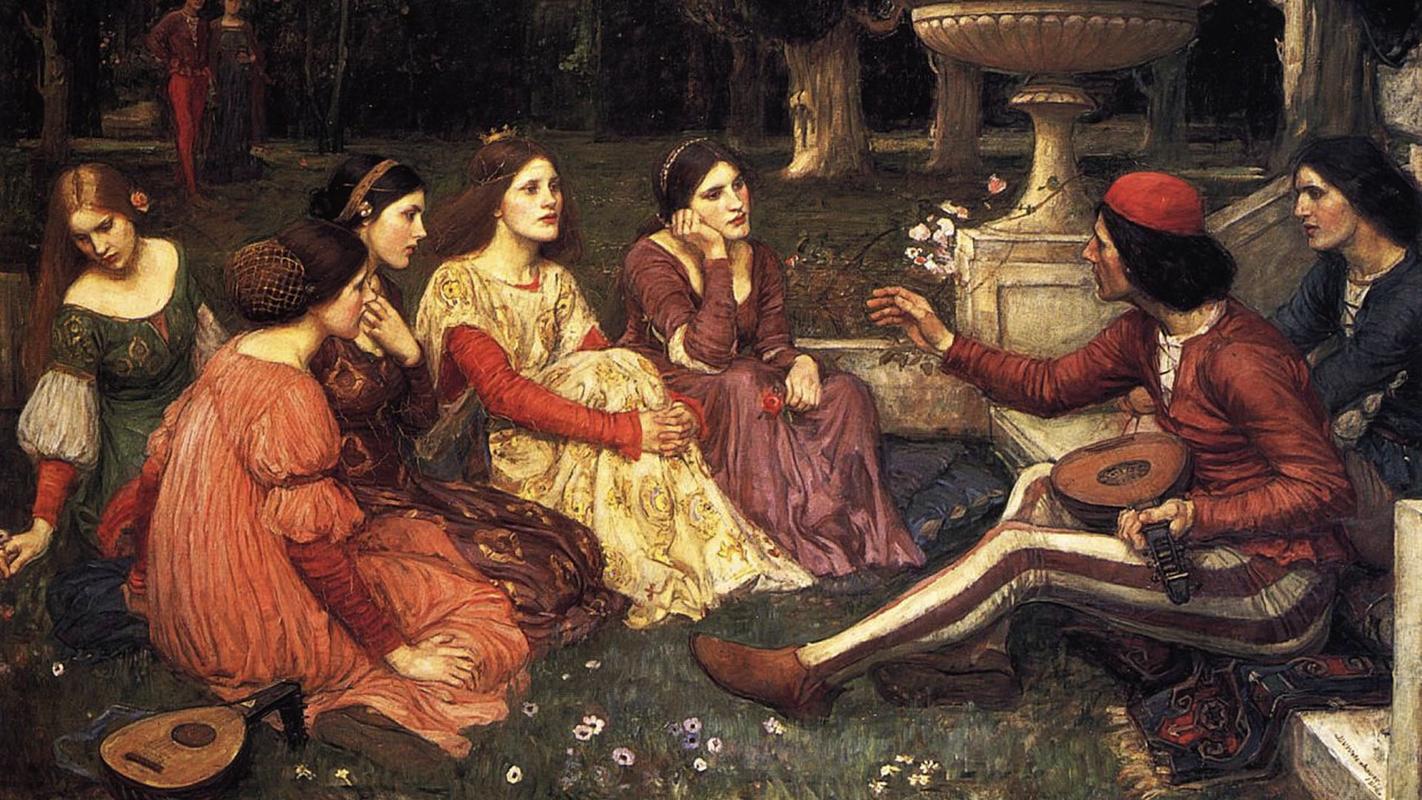More about The Decameron

Sr. Contributor
Here's how John William Waterhouse imagined Florence's 1% waited out the plague.
What a beautiful painting of gorgeous youths who, judging by the expressions on their faces, are probably talking about some serious philosophical quandary! WRONG. They are actually plague refugees and they are probably talking about sex, adultery, people getting covered in feces, corruption of the Catholic Church, thievery, revenge, and more sex.
This painting is based on Giovanni Boccaccio’s The Decameron, an Italian Renaissance masterwork of 100 stories. The often raunchy allegories are told within the framing narrative of a group of privileged hotties who barricade themselves in a Florentine villa to escape their glorious complexions being marred by the Black Death. Once inside they distract themselves by telling morality tales in the garden, but only when they aren’t too busy dressing for dinner or playing music while over half of Florence dies in the streets. The setting is inspired by Boccaccio’s accounts of the 1348 epidemic during which he observed groups isolating themselves together, “avoiding every kind of luxury, but eating and drinking moderately of the most delicate viands and the finest wines.” Well that must have been terrible. I hope the sounds of people screaming in pain outside the garden walls as their boils popped didn’t distract those inside from appreciating the vintage Abboccato.
I don’t want to get too literary here, you’ll need to buy me a drink first if you wanna talk about Italian Renaissance lit. Please just trust me when I say that this was written in 1353 so it could be painted in 1916 by Camelot-loving Waterhouse. Not only does the book include Waterhouse faves such as attractive young people, fancy dresses and a beautiful outdoor setting, but its subtitle Prince Galeotto is a nod to Prince Galehaut from the Lancelot-Grail. Through some literature based connections involving Dante, the subtitle also is a commentary on Boccaccio’s sympathy towards the crappy domestic and intellectual confinement imposed on Italian women. *fans self* Dante and gender equality, this guy really knows how to get Waterhouse and female lit. nerds going.
As you probably guessed, Waterhouse has chosen not to paint a tale from the book (the title lies! Lies I say!) but the telling of a tale. I tried to sleuth around and figure out which story is being told based on the fact that a dude is talking and only 9 of the 10 characters are present but it’s a large book and I got lazy. To save time we’ll just say it is the fourth tale of the first day in which Dioneo tells the story of a monk and abbot who both sleep with a woman at the monastery, and after some entrapments and hijinks give each other a high-five for tapping that and sneak her out. I told you: sex, corruption, revenge, and sex. Move over Game of Thrones, HBO has its next big hit.














